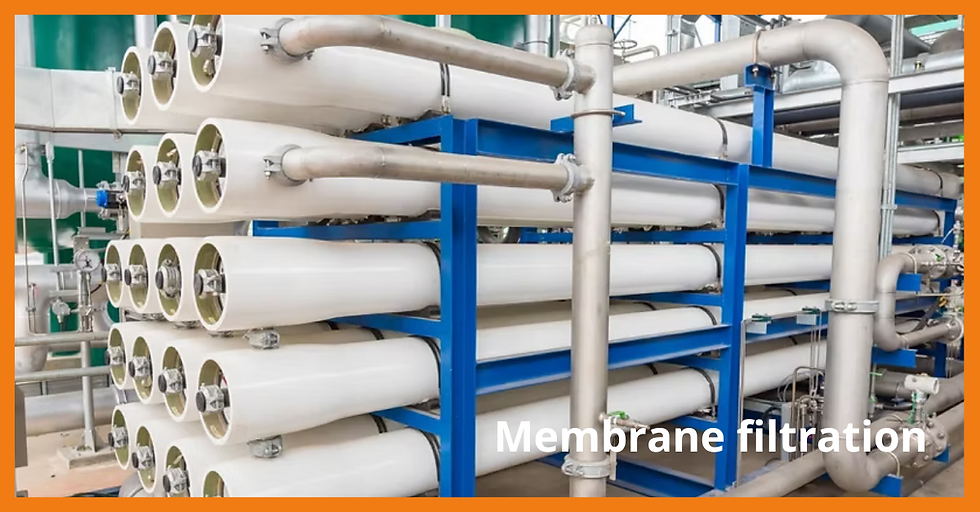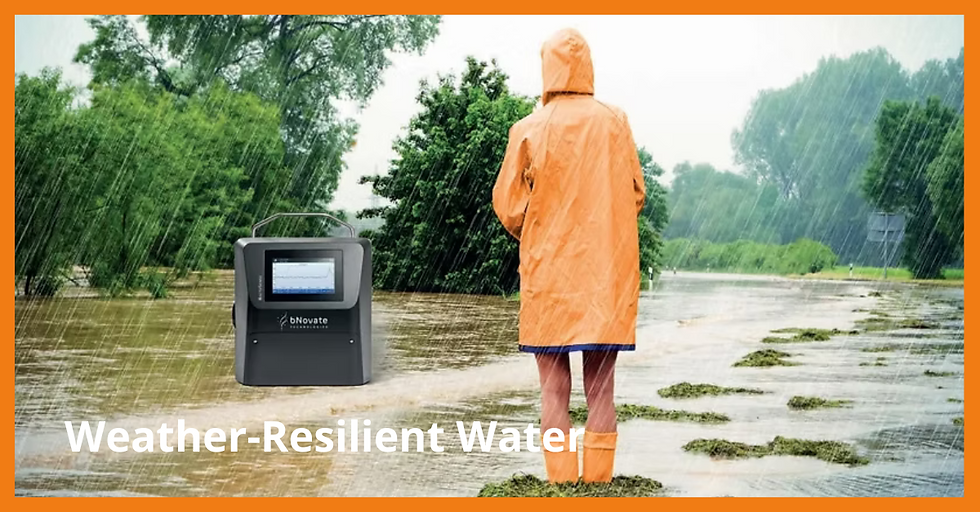The environmental impact on water sports: pollution in the Seine River
- bNovate

- Apr 24, 2024
- 4 min read
Updated: May 16, 2024

As the Paris 2024 Olympics countdown begins, have you considered the environmental impact on water sports? Water sports enthusiasts and ecological advocates especially worry about iconic water bodies like the Seine River in France.
This isn't a new issue. There's a long history, such as last year’s Open Water World Cup cancellation, because “the water quality in the Seine [was] below acceptable levels for the health of swimmers.” While the results in improving the water quality haven’t met expectations, hope remains for the world’s biggest sporting events.
Let’s delve into the multifaceted issues surrounding the environmental impact on water sports by addressing key concerns and proposing solutions for a sustainable future.
High pollution levels: a threat to water sports and environmental health
Historical significance and scenic charm aside, the Seine River persistently deals with high pollution levels. This includes untreated wastewater and high levels of metal and faecal bacteria. Not exactly the romantic Paris you imagined it to be, right? This is despite a 1.6 billion euro initiative to clean up the river in time for the Olympics. Recent concerns about the water quality led to cancelled swimming events, including Olympic triathlon tests in Paris due to high levels of Escherichia coli (E.coli) bacteria.
This seriously threatens water sports athletes, environmental conservation efforts and the local community. The pollution issues extend well beyond Paris’ city limits. Industrial sites also contribute to pollution levels in the Seine basin. Raising alarms over the river’s suitability for recreational activities hopefully encourages officials to make changes to protect the aquatic ecosystem.
Implications for athletes: health risks and performance concerns
Athletes preparing to compete in water sports events face heightened health risks due to exposure to polluted waters. The Seine River has been off-limits to bathers since 1923. That’s because various bacterial presence can lead to:
Gastro-enteritis
Urinary tract infections
Leptospirosis (a disease transmitted by rodents’ urine)
Not to mention, corpses have even been found in the river. All this creates a polluted cocktail of faecal matter, pesticides, nitrates and waste — the perfect breeding grounds for sickness or disease.
Contaminants in the Seine River can compromise athletes’ well-being, potentially leading to illnesses and impairments that impact their performance during crucial competitions. Understanding these risks is paramount to ensuring the safety and welfare of participants.
Addressing these concerns necessitates comprehensive strategies and advanced technologies to safeguard public health and promote environmental sustainability.
Advocating for policy reform: driving systemic change
Advocacy efforts aimed at policy reform are instrumental in driving systemic change and advancing environmental sustainability goals. It’s what led to the latest EU Drinking Water Directive.
Policy reforms and initiatives have played a crucial role in improving water quality in the Seine River. Since the 1960s, initiatives such as a ban on untreated sewage discharges and enhanced water treatment have been implemented to revitalise the river. Current reforms include connecting about 20,000 homes and 170 boats that discharge wastewater directly into the Seine to proper treatment facilities.
Also, empowering individuals with educational initiatives, outreach programmes, and public awareness campaigns can inspire collective action to protect the river and other vulnerable water bodies.
Campaigning for stringent regulations and investing in infrastructure upgrades allow for mitigating pollution, enhancing water quality and promoting the long-term health of the Seine River’s ecosystem.
Embracing innovation: harnessing technology for environmental conservation
Innovative technologies, such as water monitoring solutions, can mitigate the environmental impact on water sports and enhance ecological resilience. These solutions, tailored specifically for industrial and commercial applications, are pivotal in safeguarding water quality and achieving regulation standards. For instance, Paris has transitioned from traditional grab sampling techniques to automated, real-time data collection methods to monitor water quality effectively. This is especially done for the 2024 Olympics preparation and subsequent public bathing plans.
With real-time data collection and analysis, companies can provide stakeholders invaluable insights into water quality parameters. By continuously monitoring key indicators such as bacterial concentrations, these systems enable prompt identification of pollution events and facilitate timely intervention measures to minimise environmental damage.
Water monitoring solutions should also offer the ability to establish early warning systems for detecting deviations from baseline water quality conditions. By setting up automated alerts and notifications, stakeholders can swiftly respond to emerging threats, whether from industrial discharges, sewage overflow, or other contamination sources. This proactive approach minimises the impact of pollution events and prevents them from occurring in the first place.
By accurately assessing microbial contamination levels and identifying hotspots of bacterial proliferation, solutions like BactoSense empower authorities and environmental agencies to implement targeted remediation measures and enforce regulatory standards to safeguard public health and ecological integrity.
Pioneering a path toward enhancing the environmental impact on water sports
From advanced water treatment systems to sensor-based monitoring networks, leveraging technological innovations enables real-time data collection, predictive modelling and adaptive management strategies to ensure clean water. Not only that, but it can also be a great return on investment by optimising resource utilisation and minimising the ecological footprint. By also focusing on restoring natural habitats along the Seine, such as eliminating dams to obstruct fish circulation and improving water management practices, biodiversity and water quality can be improved in the Seine River basin.
As the world anticipates the Paris 2024 Olympics, there’s been a renewed awareness of the environmental impact on water sports in the Seine River. We can minimise pollution by addressing key concerns, fostering collaboration and using advanced technology. Together, with a shared vision of sustainable water management, we can safeguard the health of water sports enthusiasts and the vitality of the aquatic ecosystem and create a recreational space for everyone to enjoy for generations to come.










Comments